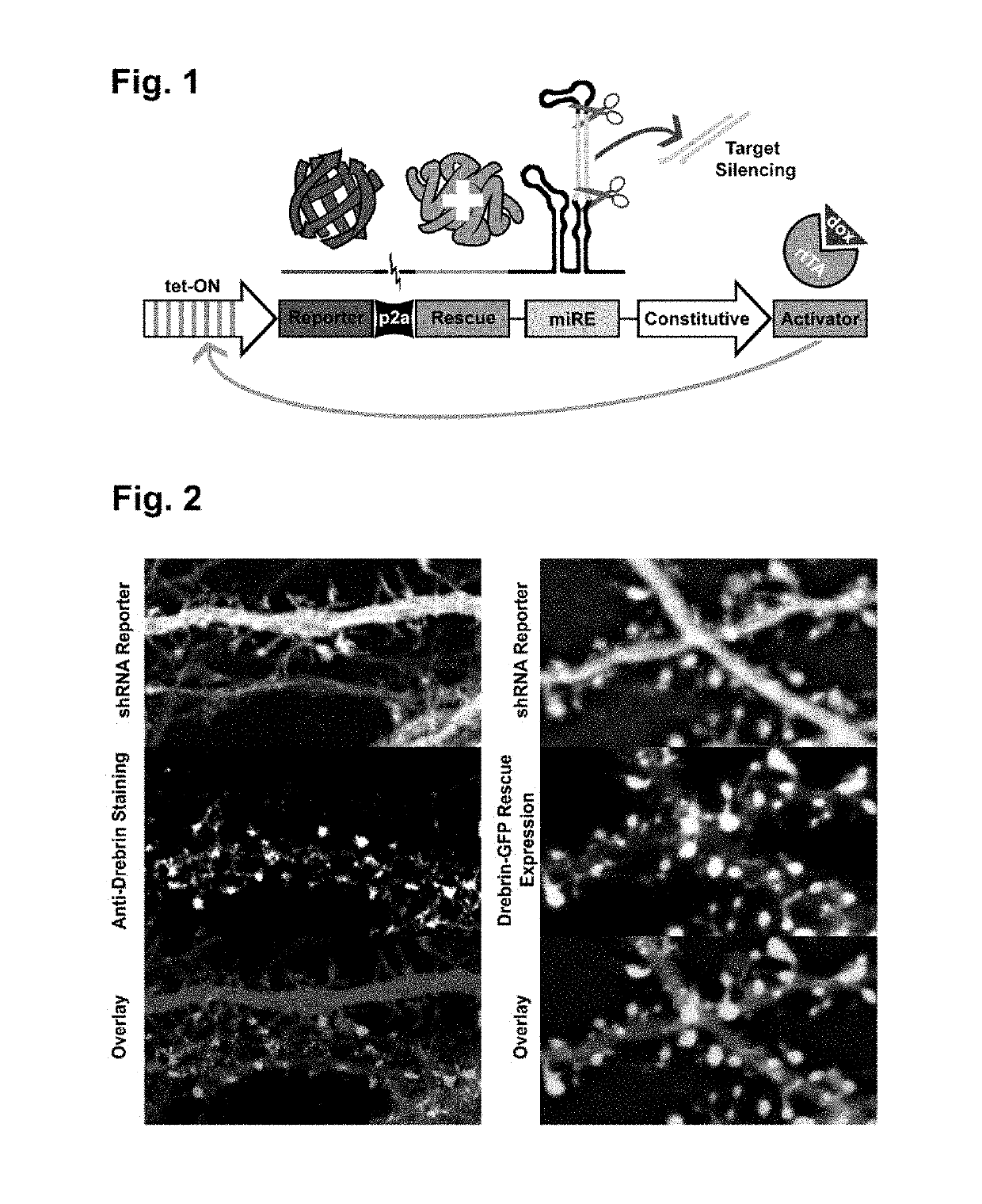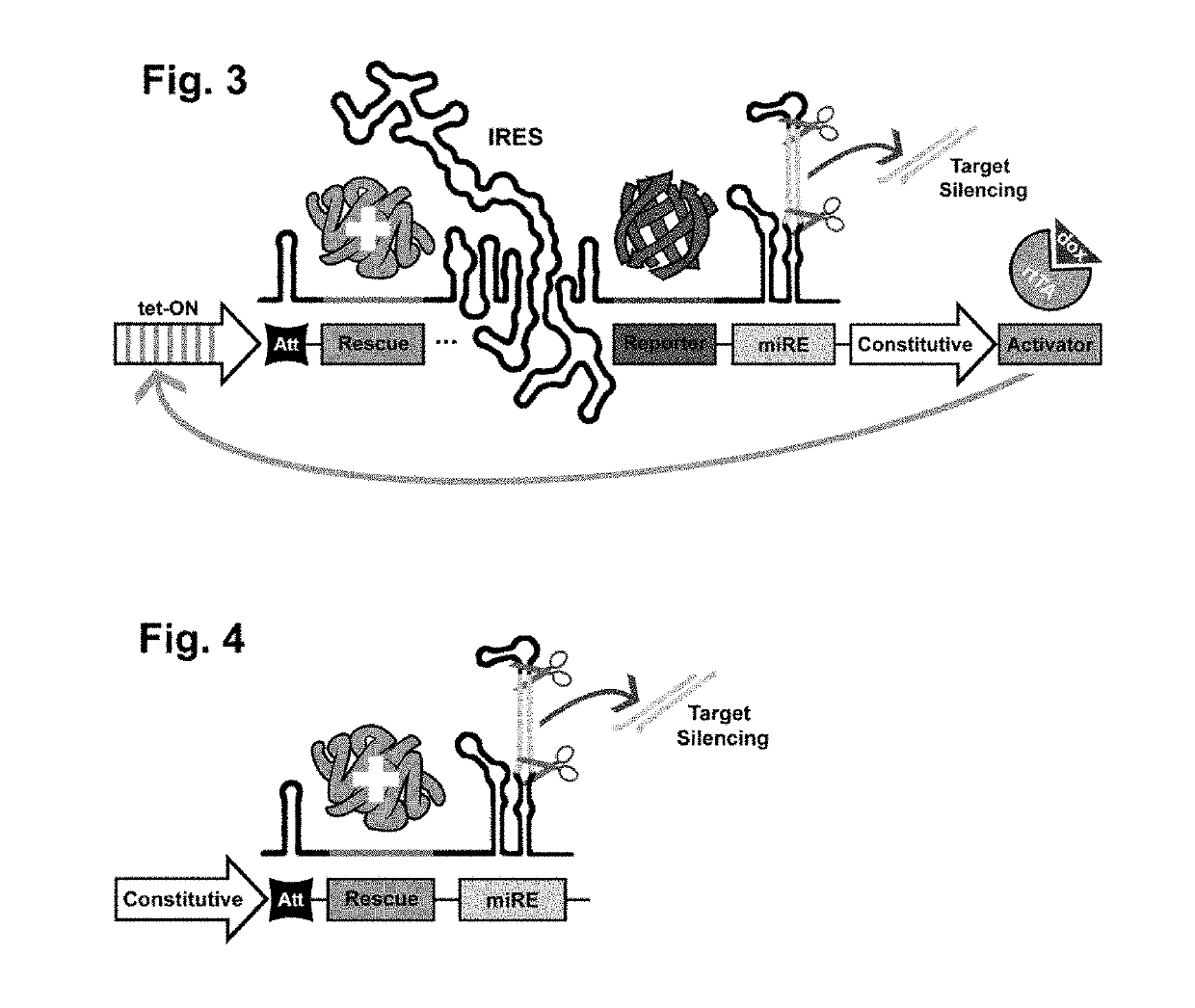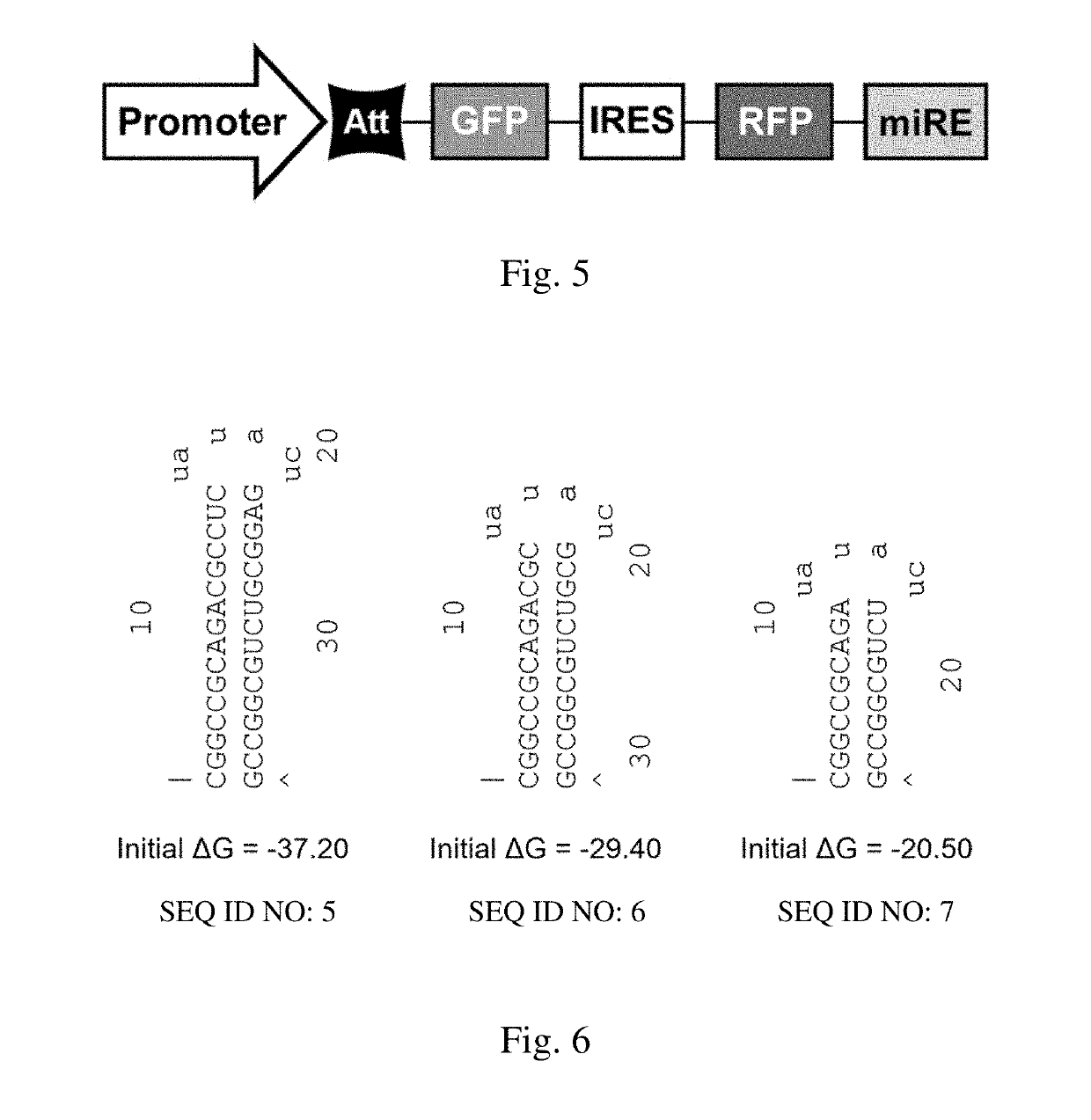Vector for gene silencing and replacement and methods of use thereof
a technology applied in the field of gene silencing and replacement expression systems, can solve the problems of ineffective gene editing, inability to meet the needs of patients,
- Summary
- Abstract
- Description
- Claims
- Application Information
AI Technical Summary
Benefits of technology
Problems solved by technology
Method used
Image
Examples
example 1
and Rescue of Drebrin
[0086]A construct according to FIG. 1 was created and the data is shown in FIG. 2. Hippocampal cultures were transfected with plasmid encoding either drebrin-targeting shRNA and no rescue gene, or drebrin-GFP rescue gene and drebrin-targeting shRNA. Cultures were allowed to mature for 14 days prior to tet-ON promoter induction with doxycycline. Cultures were fixed at 21 days, and shRNA-only dishes were immunostained with anti-drebrin antibody. Full procedural details documented in materials and methods. (FIG. 2, Left) Immunostaining of neuronal cultures with drebrin antibody confirms effectiveness of RNAi. shRNA reporter-expressing cells are entirely depleted of drebrin, while adjacent non-transfected cell is revealed by robust anti-drebrin fluorescence. (FIG. 2, Right) Knockdown-Rescue with drebrin-GFP yields morphologically normal dendritic spines. Drebrin localizes expectedly and with specificity to dendritic spines.
example 2
-Rescue Technology in an Amyotrophic Lateral Sclerosis Disease Model
[0087]Amyotrophic Lateral Sclerosis (ALS), also known as Lou Gehrig's disease, is the most common adult motor neuron disease. The hallmark of ALS is the selective dysfunction and death of the neurons that control muscle movement. ALS has no known cure, though experimental treatments are aimed to ameliorate symptoms and extend life. Approximately 90% of ALS diagnoses are linked to mutations in the SOD1 gene. SOD1 is a cytoplasmic, antioxidant enzyme which serves as the first step in superoxide radical metabolism. Over 150 different SOD1 mutations have been identified in humans. However, the Ala4Val (A4V) point mutation is present in approximately 50% of American ALS patients, while the Asp90Ala (D90A) is present in the majority of European cases. Virtually all SOD1 mutations act in a dominant manner, requiring only one mutated copy of the gene for disease manifestation, and under cellular stress even wild-type SOD1 c...
example 3
-Rescue in a Leukodystrophy Disease Model
[0095]Myelin plays a fundamental role in axon function and maintenance and its failure to develop normally in the leukodystrophies or its loss leading to demyelination, results in severe clinical dysfunction. The leukodystrophies are genetic disorders of white matter, primarily affecting the CNS. Advances in the understanding of the pathophysiology of the leukodystrophies will help guide the development of therapeutic strategies and have been hugely helped by animal models, either spontaneous mutants or those generated using transgenic or other contemporary techniques. The overarching goal is to utilize a new and exciting finding in an established myelin mutant, the taiep rat, that defines it as a model for the leukodystrophy caused by mutations in the TUBB4A gene. In both the human and rat disease, point mutations of the TUBB4A gene (A302T) result in microtubule (MT) accumulation in oligodendrocytes (OLs) which leads to their dysfunction. Th...
PUM
| Property | Measurement | Unit |
|---|---|---|
| density | aaaaa | aaaaa |
| molecular weight | aaaaa | aaaaa |
| molecular weight | aaaaa | aaaaa |
Abstract
Description
Claims
Application Information
 Login to View More
Login to View More - R&D
- Intellectual Property
- Life Sciences
- Materials
- Tech Scout
- Unparalleled Data Quality
- Higher Quality Content
- 60% Fewer Hallucinations
Browse by: Latest US Patents, China's latest patents, Technical Efficacy Thesaurus, Application Domain, Technology Topic, Popular Technical Reports.
© 2025 PatSnap. All rights reserved.Legal|Privacy policy|Modern Slavery Act Transparency Statement|Sitemap|About US| Contact US: help@patsnap.com



